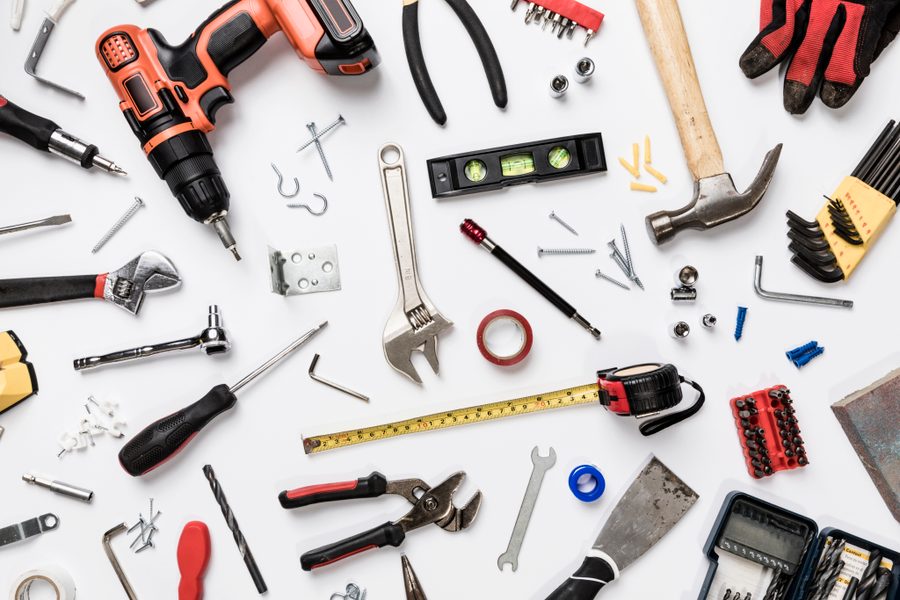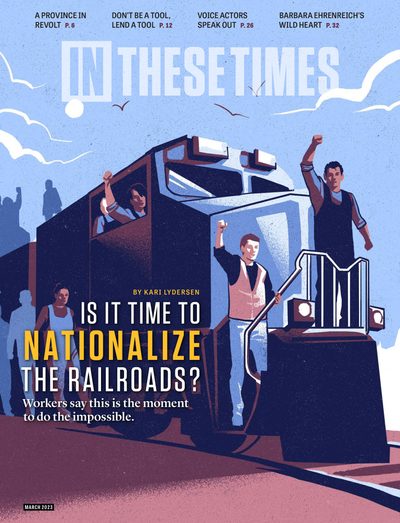If You Can Borrow a Book, Then Why Not a Chainsaw? The Rise of Tool Lending Libraries
Spawned in the wake of World War II, tool libraries lend implements and provide practical guidance to community members who can’t afford to own or store their own tools.
Aric Sleeper

As the old saying goes, there’s a right tool for every job — but what happens when a sizable tree branch falls in someone’s driveway after a big storm and the person neither owns a chainsaw nor has the extra cash to rush off to purchase a new one? Or perhaps a student with a tiny apartment doesn’t have storage space for tools, and suddenly needs a drill to fix the sagging cabinet door in the kitchen but has never used one and doesn’t know how to.
For all of these moments when the right tool for the job is out of reach, there are lending libraries that have been springing up around the country, which supply more than just books.
According to a 2021 study by an alumna from San José State University (SJSU), tool libraries were first documented in the United States in the 1940s. These unique institutions lend devices such as power and hand tools, yard and garden implements, and even kitchen utensils to those in need of the right tool, but without the means to own or store them.
According to the San José State University study, more than 50 tool libraries were operating in the United States until May 2021. There was a boom in the number of tool lending libraries in the late 1970s with the establishment of these libraries in places such as Berkeley, California, which opened in 1979 with one staff member in a portable trailer, according to the study. After more than 40 years of evolution, the Berkeley Public Library’s (BPL) current tool lending library can now be accessed through BPL’s website.
The study, which compiled “news clippings, refereed articles, blog posts, and websites,” according to the author, pointed out that scholars of the subject traditionally thought that tool lending libraries sprang up in the late 1970s. However, earlier examples date further back to the 1940s when the public library in Grosse Pointe, Michigan, opened the first tool lending library.
At the end of World War II, domestic utensils such as kitchen and yard implements were in short supply as the raw materials normally used in their production were diverted to support war efforts.
Informal tool lending within communities was common at that time, according to the study, and in 1943, the Grosse Pointe Public Library created its first tool lending library, which is still in operation, and can also be accessed online like its cousin in Berkeley.
The first inventory of about 25 tools was donated to the Grosse Pointe Public Library by the Boys’ Work Committee of the Grosse Pointe Rotary Club, who, according to the study, donated the tools to the community to “encourage manual dexterity in the younger generation.”
Today, the Grosse Pointe Public Library’s collection of tools includes more than 150 implements and devices ranging from bolt cutters to bird-watching binoculars, and even includes yard games such as bocce ball and croquet sets. All games, devices, and implements borrowed from the institution come with a how-to information pamphlet.
The local Rotary Club adopted the responsibility of maintaining and repairing a varied catalog of items, and still does so today. The study’s author stated that the survival and growth of the Grosse Pointe Public Library’s tool collection might not have been possible without the involvement of the Rotary Club, and that it was the only tool library in the country until the mid-1970s.
The second known tool lending library in the United States was formed in Columbus, Ohio, in 1976. The tool lending library was established by the local city government and provided free tools and implements to homeowners and renters within the city, stated the study. The Columbus tool library was established in a warehouse that now contains more than 5,000 implements such as hammers, drills, and ladders, which can be borrowed for durations ranging from one day to a week.
In 2009, the nonprofit ModCon Living took over operations of the Columbus-based tool library from the local government and now finances the endeavor through membership fees and donations.
Another tool library was established in Seattle, Washington, in the late 1970s by a University of Washington professor who used tools and implements donated to him by students moving away after the school year and graduation. When the collection grew too big for the professor to maintain single-handedly, the Phinney Neighborhood Association took over operations of maintaining these tools.
The Phinney Tool Library is still in operation and carries about 3,000 items including an array of power and hand tools as well as unique implements such as apple pickers and a cider press. According to the study, tools in the Phinney library that are beyond repair are donated to local artists where they find a second life as a component in a craft piece or art installation.
The greatest increase in tool lending libraries in the United States came around 2008 during the Great Recession, according to the study, with institutions like the Sacramento Library of Things in California and the Chicago Tool Library in Illinois opening as part of this “tool-lending movement.” Another organization that provides tools to charitable groups instead of individuals, called ToolBank USA, was also established at that time in 2008. The study’s author credits advances in technology like cloud-based software to the continued boom in tool lending libraries across the United States.
Tool lending libraries have also been established overseas in the United Kingdom, stated the study. Scotland’s Edinburgh Tool Library was established in 2015, which inspired similar institutions in areas like Leith and Portobello in Edinburgh, and in 2018, a Library of Things was established in London, England, which is run by volunteers who assist interested organizations and municipalities in creating their own tool libraries.
With the popularity of audio and digital books and rising inflation increasing the cost of tools and implements everywhere, public libraries in the United States and around the world may all adopt the tool-lending precedents established by pioneers such as the Grosse Pointe and Berkley public libraries, which have tool lending models that have been used successfully for decades.
This article was produced by Local Peace Economy, a project of the Independent Media Institute.
Aric Sleeper is an independent journalist whose work, which covers topics including labor, drug reform, food, and more, has appeared in the San Francisco Chronicle and other publications local to California’s Central Coast. In addition to his role as a community reporter, he has served as a government analyst and bookseller.






